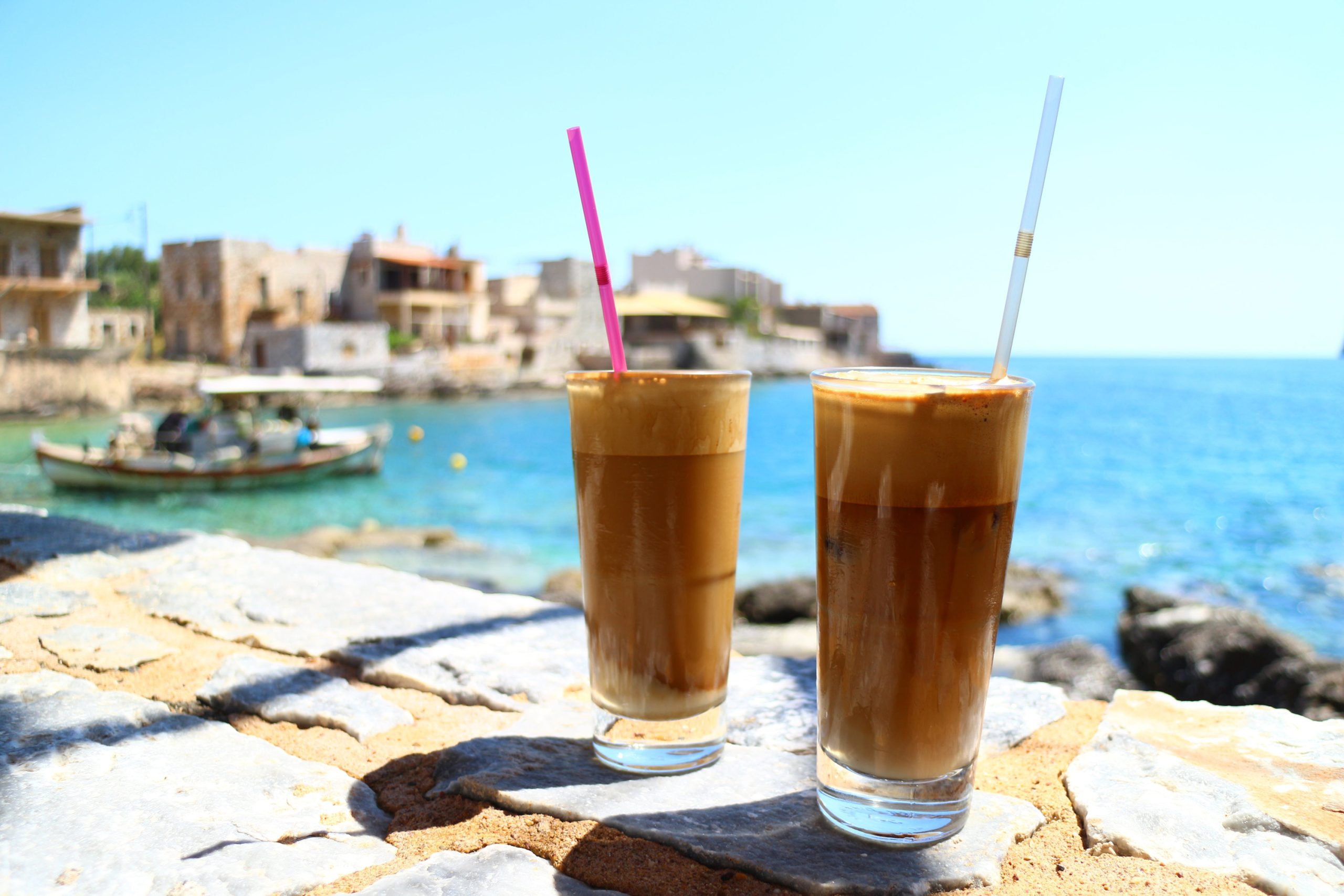A coffee in Thessaloniki
January 30, 2023 || views
Nada Dosti is a journalist, translater, teacher and a travel lover. We brought some of her stories and impressions in this issue, from Thesaloniki Greece, Ohrid N. Macedonia and Bled, Slovenia.
I arrive from Istanbul to Thessaloniki by bus, just transit and only for a few hours. “Enough time for a coffee” I think. Interesting how connected we are with the coffee culture and how much we use it as a benchmark for measuring time.

I have very little time to discover this small town by the sea. Although I am not attracted at first sight. I wonder if the same thing happens to others: that in some places you don’t get attracted at all. Places that neither thrill nor intrigue you?” There is a sea, but its waves do not calm me like the sea of my hometown. There are palms and pine trees, but they don’t attract me like the ones of Durrës. As if they do not have the same grandeur and aroma.

It is afternoon, very close to sunset. The whole city lights up in orange, perhaps because of the low-rise buildings, the wide access to the horizon or the exposure of most of the city to the sun and its rays. Maybe it has something to do with the season or the time of day, but the color orange seems to me to represent Thessaloniki the most. An orange very close to the color of brick and brown. And if they would ask me “how did you find Thessaloniki?” To explain to someone who has not been here before, I would say: a little like Izmir, a little like Samsun, a little like Durrës, a little like Vlora, more or less like all the coastal towns with a port in this region.

The city was named after Queen Thessalonica, the daughter of Philip II and one of his wives, half-sister to Alexander the Great of Macedonia. A city named after a woman! Not a random woman, but a queen. I’m starting to like this place. I can imagine her escorting me along the shore, then towards the White Tower. I can picture her standing stoically on the throne, giving instructions and directives, leading battles or receiving delegations.
Interesting this decision to name a city after a woman when in fact it is thought that the beginning of the history of discrimination against women has its source in the Greek mythology. The myth of Pandora, for example, is highly symbolic: the first woman is sent to Earth by Zeus to punish humans for the sin committed by Prometheus, who had stolen fire from the gods to give to humanity.

Unlike Eve (in Christian culture), who was created to make Adam’s life more pleasant, albeit in a subordinate role, Pandora was born to punish humanity. Hesiod, when talking about the myth of Pandora, claimed that she was “an evil so beautiful” that it was a “deceit that cannot be saved from it” and that “the accursed race, the tribe of women” has its origin precisely from her. For the Greeks, Pandora was otherness. And as Jean-Pierre Vernant explains, female otherness for the Greeks was so incomprehensible that it was comparable to the mystery of death: not surprisingly, nor by chance, in the Greek world often represented by female figures (Hecate, Persephone, Ker, Sirens ).

Apparently women are always to blame: “the woman bottled the devil”, just as Eve plucked the forbidden apple thereby being blamed for original sin (again according to Christian culture). Pandora was also blamed for all the evils of the world. Her curiosity led her to open a box (in the shape of a vase), given to her by Zeus, which she should not have opened, and which contained all the misfortunes of the world. Often men’s responsibilities are overshadowed or disappear altogether, as in the stories they themselves have been telling us for thousands of years. Zeus who collected all the misfortunes in a single box was not to blame. Not even Adam who was mature and aware of controlling himself not to be tempted by Eve. So it’s all women’s fault. Today we also have a whole scandal named Pandora Papers.

Anyway!
Lefkós Pýrgos, the White Tower, although it is not white, but stone-colored, is the symbol of the city. An impressive building which replaced the Byzantine fortification collapsed during the expansion of the city centuries ago. It took the form it has today during the time of the Ottoman Empire, by order of Sultan Murat the Second.
The coffee though was very good. Frape was invented exactly here. The only thing that reminds me of my hometown, especially my childhood, is trigona, which I knew as an Albanian dessert until this moment. How many things we think belong to us but in fact it is not so.

As I climb the steps of the bus that continues its transit to my favorite destination, I turn my head back to give it one last look. “Thessaloniki, it’s not your fault, but it’s me who probably didn’t value you enough. Give me another chance, let’s meet once again for the first time. Let’s start our acquaintance from the beginning, to appreciate each other even more. I can’t wait to come back again, wait for me!”